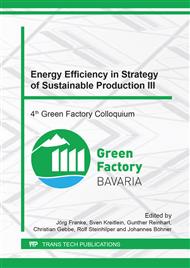p.199
p.208
p.220
p.230
p.237
p.244
p.252
p.262
p.267
Circulatory Flow Characteristics in Side Channel Blowers
Abstract:
Side channel blowers generate their pressure rise by a complex inner flow field. Despite being subject to scientific investigations since the 1940s, the mechanism behind the generation of high-pressure coefficients, i.e. around 20, are still not fully known. In literature, two main theories try to explain the inner workings and the momentum transfer from theimpeller to the fluid. One approach sees the momentum being transferred by shear stresses between the impeller and the slower fluid in the channel. The other approach sees the circulatory flow, generated by the centrifugal force acting on the circumferentially moving fluid, as the key mechanism to energy transfer from the impeller to the fluid. A review of both mechanisms is necessary to allow for further improvements in the efficiency. In the current work, a numerical analysis of a straight side channel model is presented. The model holds the possibility to omit the influence of the centrifugal force and thus prevent the generation of a circulatory flow. Hence, only shear stresses between fluid and impeller contribute to the momentum transfer. The results show that the circulatory flow is essential to a proper energy transfer and thus high pressure coefficients.
Info:
Periodical:
Pages:
237-243
Citation:
Online since:
October 2017
Authors:
Price:
Сopyright:
© 2017 Trans Tech Publications Ltd. All Rights Reserved
Share:
Citation:


